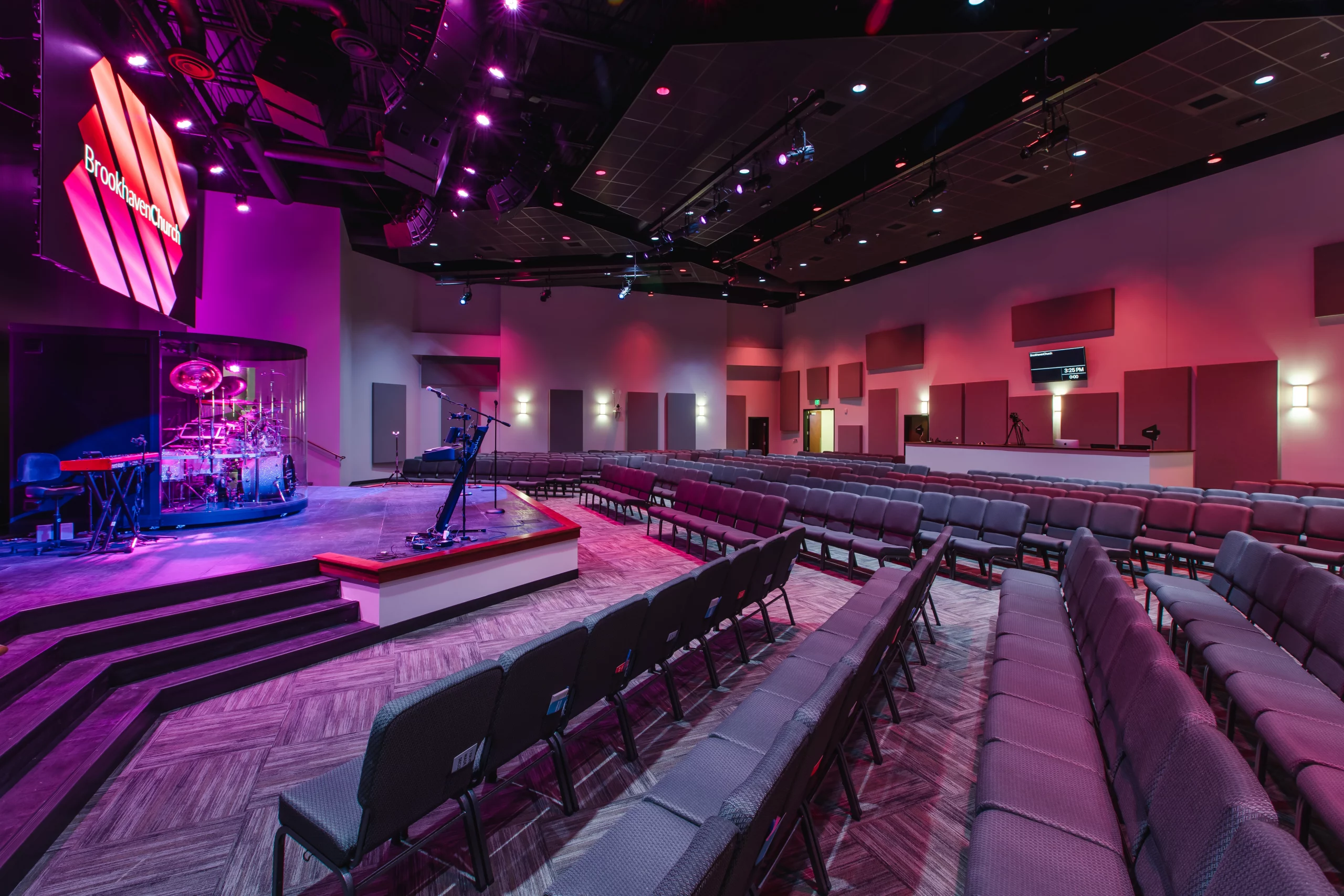
Tips and Advice for Planning the Construction of a Church
by Natalie Akins, guest blogger & editor for Innovative Building Materials
Tips and Advice for Planning the Construction of a Church
by Natalie Akins, guest blogger & editor for Innovative Building Materials
Beginning church construction is a major step in your ministry that requires careful and thoughtful planning in order to be a success. At BGW, we exist to provide innovative services, including design, construction services, financial planning, and more, so that your church building is focused on good stewardship and intentional ministry to your community.
Below, we’ve compiled a list of important tips and advice to consider when you begin planning the construction of a church. Continue reading to learn how to get your church construction process started, and how BGW can help.
Beginning church construction is a major step in your ministry that requires careful and thoughtful planning in order to be a success. At BGW, we exist to provide innovative services, including design, construction services, financial planning, and more, so that your church building is focused on good stewardship and intentional ministry to your community.
Below, we’ve compiled a list of important tips and advice to consider when you begin planning the construction of a church. Continue reading to learn how to get your church construction process started, and how BGW can help.
1. Form a Building Committee
1. Tip: Form a Building Committee

The first step once your church realizes the need to construct a church is to form a building committee. This should be a group of members with experience in construction, finance, or other related industries. One tip is the committee should also include members with a comprehensive understanding of the needs of the church.
While a small group will make up this committee, another tip it is important to also include your congregation in this process. The construction committee can meet with the design professionals for the project, and report back pertinent information to the congregation.
Without this committee, the church body will be reliant upon single points of contact like the pastor to communicate their needs, and some members may not have their needs met by the new building.

The first step once your church realizes the need to construct a church is to form a building committee. This should be a group of members with experience in construction, finance, or other related industries. The committee should also include members with a comprehensive understanding of the needs of the church.
While a small group will make up this committee, it is important to also include your congregation in this process. The construction committee can meet with the design professionals for the project, and report back pertinent information to the congregation.
Without this committee, the church body will be reliant upon single points of contact like the pastor to communicate their needs, and some members may not have their needs met by the new building.
2. Select your Pre-Construction Team
2. Tip: Select your Pre-Construction Team

Another important step in the construction planning process will be the selection of the pre-construction team. This group consists of the architects, engineers, and/or project managers who will be responsible for designing the church. Selecting this group is very important since they will determine the specifics of how your building is built, along with how well your needs as a church are met.
Interviewing multiple candidates for this position is important to narrow down the group that fits your values and is most likely to provide for your needs the best. Every church will have different needs, but it will be important to find your desired combination of experience and cost for services.

Another important step in the construction planning process will be the selection of the pre-construction team. This group consists of the architects, engineers, and/or project managers who will be responsible for designing the church. Selecting this group is very important since they will determine the specifics of how your building is built, along with how well your needs as a church are met.
Interviewing multiple candidates for this position is important to narrow down the group that fits your values and is most likely to provide for your needs the best. Every church will have different needs, but it will be important to find your desired combination of experience and cost for services.
3. Determine your Budget Early
3. Tip: Determine your Budget Early

Budget is always a key factor that will influence the design of your church. It is important to establish your budget early so that you can work to remain within that budget from the beginning.
A church should consider what they can afford, and what budget amount is good stewardship of the church’s resources. Also, consider important factors like what funds may be raised to support the project, and the feasibility of various financing options.

Budget is always a key factor that will influence the design of your church. It is important to establish your budget early so that you can work to remain within that budget from the beginning.
A church should consider what they can afford, and what budget amount is good stewardship of the church’s resources. Also, consider important factors like what funds may be raised to support the project, and the feasibility of various financing options.
4. Conduct a Master Plan Study
4. Tip: Conduct a Master Plan Study

Often, church construction is a long-term plan to serve the future of the church. So, it may be beneficial for the design team to conduct a master plan study. The results of this study will allow the church and design team to design a building that will serve the needs of the church in the present without prohibiting the future growth of the church.
During this phase, the design team will narrow down the focus of the project to the core necessities of the church. They will then extrapolate this into a vision and core mission for the future of the church. This will be used to plan future improvements to align with that mission statement. Cost analysis can also be performed during this study, allowing for appropriate goal setting for future fundraising efforts. A master plan study may also reveal that previously conceived plans are not viable or can be improved. This will greatly cut down on any unexpected changes necessary in the future.

Often, church construction is a long-term plan to serve the future of the church. So, it may be beneficial for the design team to conduct a master plan study. The results of this study will allow the church and design team to design a building that will serve the needs of the church in the present without prohibiting the future growth of the church.
During this phase, the design team will narrow down the focus of the project to the core necessities of the church. They will then extrapolate this into a vision and core mission for the future of the church. This will be used to plan future improvements to align with that mission statement. Cost analysis can also be performed during this study, allowing for appropriate goal setting for future fundraising efforts. A master plan study may also reveal that previously conceived plans are not viable or can be improved. This will greatly cut down on any unexpected changes necessary in the future.
5. Consider Multiple Fundraising Strategies
5. Tip: Consider Multiple Fundraising Strategies

Raising money and establishing a construction fund are most often the methods used by churches to save up for construction expenses. With many churches embracing larger, and subsequently more costly ministry spaces, you may need to consider other sources of funding. This can be a good time to consult with a capital fund consultant to ensure that your church’s spending targets are reasonable and their proposed methods for reaching them are feasible.
The common church fundraising strategy is to launch a church-wide capital campaign in which an offering is collected and dedicated specifically to building expenses. To launch this type of fundraising campaign, establish a vision for the church and share it with your church body. This will allow your members to be engaged in both the fundraising and construction processes.

Raising money and establishing a construction fund are most often the methods used by churches to save up for construction expenses. With many churches embracing larger, and subsequently more costly ministry spaces, you may need to consider other sources of funding. This can be a good time to consult with a capital fund consultant to ensure that your church’s spending targets are reasonable and their proposed methods for reaching them are feasible.
The common church fundraising strategy is to launch a church-wide capital campaign in which an offering is collected and dedicated specifically to building expenses. To launch this type of fundraising campaign, establish a vision for the church and share it with your church body. This will allow your members to be engaged in both the fundraising and construction processes.
6. Plan Out A Realistic Schedule
6. Tip: Plan Out A Realistic Schedule

Familiarize yourself with the typical design schedule of buildings of similar size to yours. The design team should be capable of providing this for you, but it is important to realize how long the construction process will take in order to temper your expectations. This can also help you eliminate delays by keeping the schedule in focus, much in the same way that establishing a budget early can keep you from exceeding your allowable spending limit.

Familiarize yourself with the typical design schedule of buildings of similar size to yours. The design team should be capable of providing this for you, but it is important to realize how long the construction process will take in order to temper your expectations. This can also help you eliminate delays by keeping the schedule in focus, much in the same way that establishing a budget early can keep you from exceeding your allowable spending limit.
7. Plan for Thoughtful Design
7. Tip: Plan for Thoughtful Design

During the preliminary design stage, it is helpful to focus on key design elements that will make the church a more effective place to minister to the community. For example, building materials and finishes that are both aesthetically pleasing and practical will allow you to practice good stewardship of your resources.
Consider stain concrete floors. This is a way to add color to a trendy and updated church space. This is also a durable and cost-effective flooring material that will hold up well over time. Stained concrete flooring can be a viable option for a church that is renovating rather than building.
An often-overlooked element of new church construction is the HVAC system. With many modern churches featuring large spaces with high ceilings and lots of windows, an undersized HVAC system can quickly become a problem. It is the responsibility of your design engineers to make sure a high-quality HVAC system is designed for your space.
It is also important that your building design includes items that can indirectly help your HVAC system run more efficiently. Items such as backdraft dampers, below-grade insulation, LED lighting with daylighting capabilities, and high-quality windows can also help your church save money on HVAC operating costs.
Natalie Akins is an editor for the Innovative Building Materials blog and a content writer for the building materials industry. She is focused on helping fellow homeowners, contractors, and architects discover materials and methods of construction that save money, improve energy efficiency, and increase property value.

During the preliminary design stage, it is helpful to focus on key design elements that will make the church a more effective place to minister to the community. For example, building materials and finishes that are both aesthetically pleasing and practical will allow you to practice good stewardship of your resources.
Consider stain concrete floors. This is a way to add color to a trendy and updated church space. This is also a durable and cost-effective flooring material that will hold up well over time. Stained concrete flooring can be a viable option for a church that is renovating rather than building.
An often-overlooked element of new church construction is the HVAC system. With many modern churches featuring large spaces with high ceilings and lots of windows, an undersized HVAC system can quickly become a problem. It is the responsibility of your design engineers to make sure a high-quality HVAC system is designed for your space.
It is also important that your building design includes items that can indirectly help your HVAC system run more efficiently. Items such as backdraft dampers, below-grade insulation, LED lighting with daylighting capabilities, and high-quality windows can also help your church save money on HVAC operating costs.
Natalie Akins is an editor for the Innovative Building Materials blog and a content writer for the building materials industry. She is focused on helping fellow homeowners, contractors, and architects discover materials and methods of construction that save money, improve energy efficiency, and increase property value.